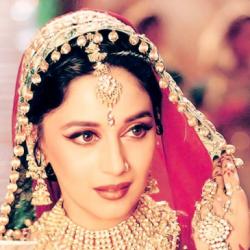AYURVEDA HAIR CARE REGIMEN - A HOLISTIC APPROACH
Long, thick hair has an allure of its own. Men are invariably attracted to it. It makes women feel more feminine and somehow more powerful at the same time.
AYURVEDA HAIR CARE REGIMEN - A HOLISTIC APPROACH
"How did you grow it so long?" I can't believe its so thick!" What do you do to make it so shiny?" are questions that Indian womens often hear. You must spend a lots of time and money on your hair". Is another comment frequently heard.Yet their hair care routine is quite inexpensive and very simple.
The scalp must be clean and well nourished.New hair growth cannot push its way out of the follicle if the follicle is clogged in any way.
The best way to clean and nourish clogged hair follicles is through oil massage and vigorous brushing.
What oil should one use?
Any Indian grocery shop will offer a number of excellent hair oils. These consist of the essential oils of Ayurvedic herbs like amla and brahmi mixed into base oils such as coconut, sesame seed and almond.
Alternatively, one can mix 40 drops each of rosemary, lavender, thyme and lemon oils into a 100ml bottle of pure almond oil. I personally use this oil, as it is much lighter than the traditional formulas.
The real secret is not in what you use but how you use it.
Action
Begin by pouring the oil of your choice on your head. And I mean pour! A dab of oil acts like a dust trap and probably does more harm than good. The oil has to soak into the scalp. Only then does it reach the follicles!
You must then distribute the oil by using the tips of your fingers to massage your scalp. Use small circular, clockwise movements from the forehead to the nape and then from ear to ear. Try to move the scalp rather than the hair itself. Finally, pick up small strands of hair and give them gentle tugs!
It is surprising how much oil the scalp absorbs. Traditionally, in India the remaining oil is combed through the hair, right to the ends. Brush from the nape of the head to the crown, from one ear to the other and finally from the hairline back to the nape. Continue brushing until your scalp feels all tingly and your hair is completely smooth.
Traditionally, the oil was left on the scalp and hair overnight. I find that a half hour oil treatment has as much effect as leaving it on for the whole night.
The real problem is to find a shampoo that will remove the excess oil and not dry out the hair and scalp.
Most commercial shampoos contain sodium laurel sulfate or ammonium laurel sulfate. These ingredients produce lavish suds. But they also strip the hair shaft of the oil it needs to remain soft and flexible. My experience is that sodium laurel sulfate also slows hair re -growth.
Traditional Ayurveda recommends a variety of products for washing the hair. Most of these are messy and difficult to use .For instance, I wouldn’t advise using a paste of flour and tamarind juice or a paste of henna or even mashed, ripe banana mixed with yogurt!
basic Ayurvedic shampoo
The following however are as easy to use as commercial shampoos without any of the harmful side effects:
Soak a handful each of dried amla, reetha nuts, and shikakai pods overnight in two pints of water. Boil the next morning until the mixture is halved. Cool and strain into a jug. This decoction can be stored in the refrigerator for at least a week.
Amla, reetha and shikakai are inexpensive, herbal products. They are available in any Indian grocery store as well as from Internet vendors.
Reetha and shikakai contain saponin, a natural cleansing agent. They have been used for washing everything from woolen rugs to silken saris to gold and silver jewelry and of course hair for centuries. Some scholars even believe that the word shampoo is derived from the word shikakai. They have to be softened by soaking and boiling but they produce copious suds and clean the hair and scalp effectively.
Amla is the Indian gooseberry. Amla has one of the highest concentrations of vitamin C in the world ---about five times as much as the vitamin C contained in oranges! The amla is essential to soften and condition the hair because the soap nuts leave the hair a little brittle. Amla prevents dandruff, stimulates hair growth and retards graying.
Are these products safe? They have been used by millions of people for about four thousand years and the only complaint is that reetha tastes bad!
An equally effective alternative is lentil shampoo:
Soak two tablespoons of urad dhal (black gram) in a pint of water until the grains swell. Boil until cooked and very soft. Blend the mixture at high speed until it turns frothy. Strange as this seems, it works just like shampoo. It leaves the hair squeaky clean and very soft.
The trick is to use the shampoo directly on dry (or to be precise oily hair). Do not wet the hair. Oil does not mix with water (very elementary chemistry). The shampoo will not react and the hair will remain dirty. Massage the scalp clockwise, making sure that the scalp and hair are fully covered by the shampoo. Leave on the hair for a few minutes. Rinse well. Repeat but with a very dilute shampoo. This second shampooing usually produces lavish suds.Rinse again. If one wishes one can rinse with an infusion of rosemary, chamomile, lavendar or hibiscus flowers. The hair will be clean but supple with a lovely scent.
Hair must be totally dry before its combed
The Ayurvedic method for drying hair is fuss-free and effective.
After wringing the hair (a lot of water can be removed this way) I dry the scalp by vigorously rubbing with a small washcloth. The scalp should become pink. I then blot the hair dry with a soft cotton cloth (old T shirts are ideal). When my hair is no longer dripping, I wrap it up in another T-shirt and let it dry naturally. I never, ever use a hair dryer. My hair does take a couple of hours to dry. But I use this time either to relax or to catch up on my work.
It is a bit of work. But the results are worth it!
One result of the traditional oiling and shampoo is there is generally no need for conditioner or hair serum. The hair is smooth and almost tangle free with hardly any split ends. Sometimes I rub a few drops of coconut or almond oil into the very ends, but that is all. Brushing takes only a few minutes. Brushing dry hair is the reverse of brushing oily hair: I start at the ends and gradually work any tangles out by starting each pass of the brush a few inches higher up until I reach the scalp.
I have never used a boar bristle brush. I find that a styling brush with rubber bristles works very well.
One drawback to the traditional shampoo is that no one knows how the reetha/shikakai will affect blonde or reddish hair. For this reason, I advise my blonde and redhead friends to use Castile shampoo diluted with chamomile infusion. Otherwise, it seems to work on any hair type and at any age.
How often should one oil and massage the scalp?
Daily would be ideal. I did this during a summer vacation and this was the time, my hair really grew back. Now I maintain my hair by repeating the treatment once or twice a week.
I was very excited when I started using the Ayurvedic method and experiencing the results. I started telling a lot of people about it. Surprisingly, most people do not want to give up their favorite shampoo and conditioner! I was even accused of being a salesperson for soap nuts and amla! In the true yogic spirit, I do not answer back…
But I still say that anyone who really wants healthy, natural looking hair should at least give Ayurvedic Hair Care a try.
Thanks to : www.hubpages.com









